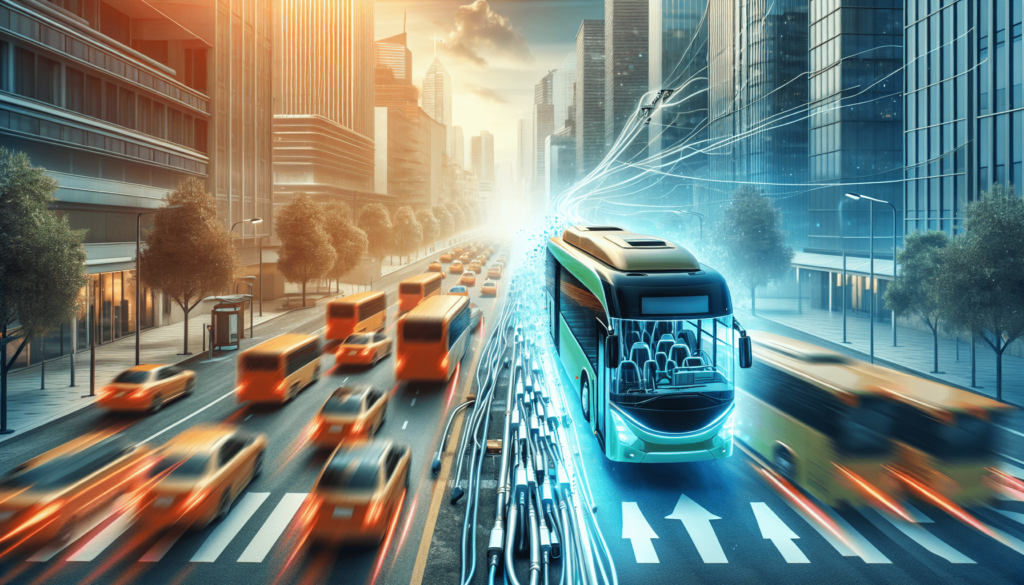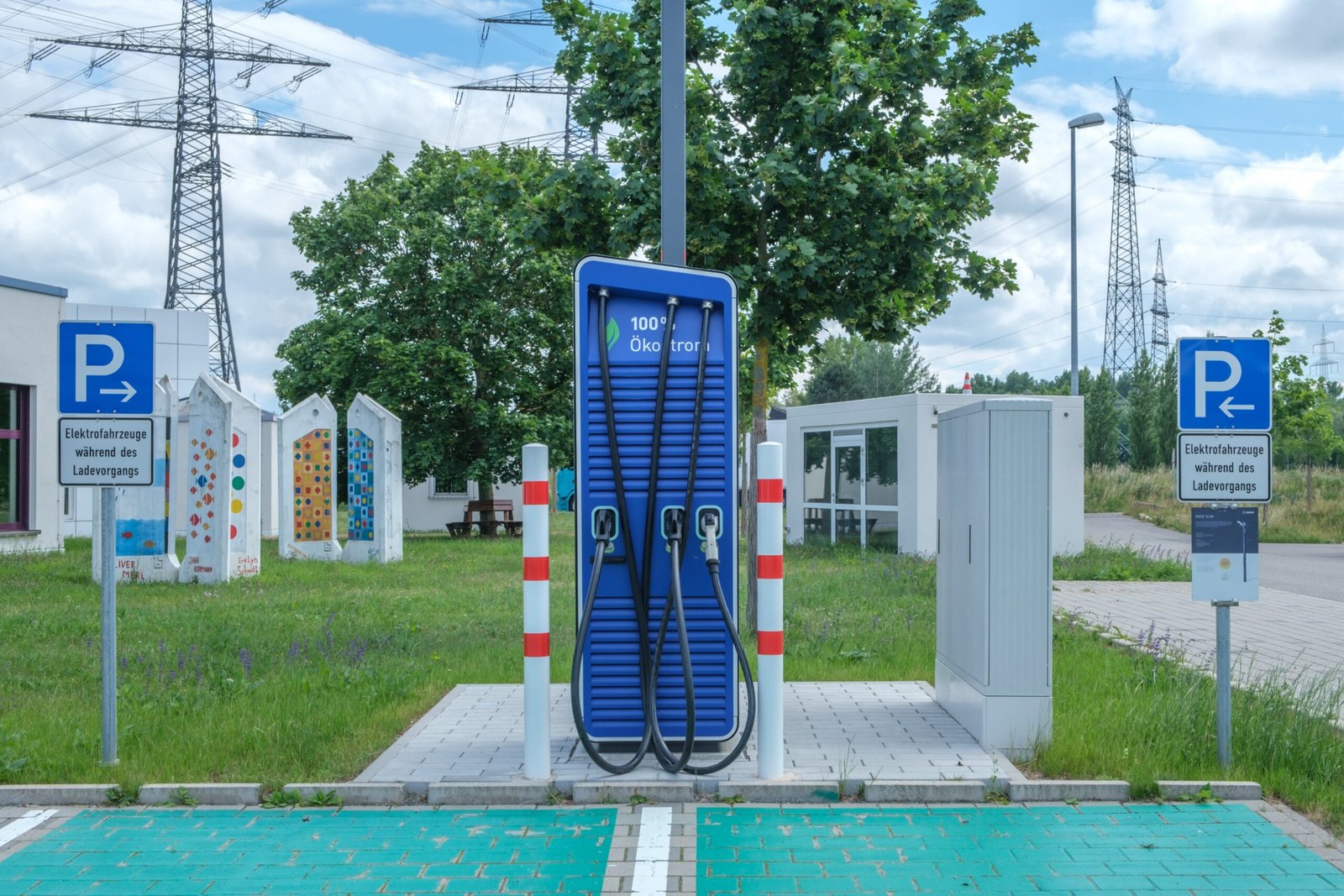Imagine your city’s buses, trains, and trams smoothly gliding along, silent except for the hum of electricity. This is the future with electric public transportation—a shift that holds promise for significantly reducing urban pollution and combatting climate change. The transition from diesel-powered to electric buses and trams doesn’t just mean cleaner air for you and your family; it also signals a substantial decrease in greenhouse gas emissions, a quieter cityscape, and an overall improvement in the quality of urban life. Let’s explore how electrifying public transport can be a game-changer for the environment, making our cities greener, healthier, and more sustainable places to live.
Reduced Air Pollution
When you think about making the switch to electric public transportation, one of the most significant benefits that jumps out is the drastic reduction in air pollution. It’s like giving the city skies a much-needed breath of fresh air. Let’s dig into how this happens.
Lower emissions of greenhouse gases
First off, electric vehicles (EVs) make a huge difference in cutting down greenhouse gas emissions. Since they don’t burn fossil fuels directly like their gasoline-powered counterparts, they don’t emit carbon dioxide during operation. Imagine all the buses and trains in your city running smoothly without coughing out clouds of CO2. It’s a big step towards fighting climate change on a local scale.
Reduction in exhaust pollutants
You know that smoggy haze hanging over the city on a busy weekday? That’s partly because of exhaust pollutants from traditional vehicles. Switching to electric public transportation means we get to cut down on those nasty particulates like nitrous oxides and sulfur dioxide. No more holding your breath while waiting for the bus.
Improvement in urban air quality
All these reductions in emissions and exhaust pollutants naturally lead to an improvement in urban air quality. Remember those alerts warning sensitive groups to stay indoors on poor air quality days? With more electric vehicles on the road, we’d see fewer of those days. It’s all about creating a healthier environment for you and your community.
Positive impact on public health
And the cherry on top? All these improvements have a direct positive impact on public health. Less pollution means fewer respiratory problems, heart conditions, and a host of other health issues related to air quality. It’s like the city itself can breathe easier, and so can you.
Decreased Dependence on Fossil Fuels
Relying on fossil fuels feels a bit like being stuck in a bad relationship. It’s expensive, it’s messy, and it’s not sustainable in the long run. By transitioning to electric public transportation, we’re making a clean break.
Reduction in oil consumption
Switching to electric means we get to cut back significantly on our oil consumption. Every electric bus or train is one less guzzler of gasoline or diesel. It adds up quickly, helping us tread a bit lighter on our planet’s finite resources.
Lessening the geopolitical impacts of oil dependence
Let’s not forget the geopolitical dance that is oil dependence. It complicates international relationships and often ties us to unstable regions. Reducing this dependence could lead to a more stable and peaceful global landscape. Who knew that choosing electric could be a step towards world peace?
Promotion of energy diversity and security
And with the move away from oil, we get to embrace a more diverse and secure energy portfolio. Electric public transportation can be powered by a mix of renewable sources like wind, solar, and hydro. It’s all about not putting all our eggs in one basket and ensuring a reliable energy supply for everyone.

Noise Pollution Reduction
The sound of progress doesn’t have to be deafening. Electric vehicles come with the bonus of running much quieter than their internal combustion engine counterparts.
Quieter operation of electric vehicles
Imagine waiting for the bus without the roar of an engine announcing its arrival from blocks away. Electric buses and trains glide into stops with a whisper. This reduction in noise pollution makes for a more pleasant waiting experience and a quieter commute.
Improved living conditions in urban areas
Quieter streets mean improved living conditions in urban areas. No more being woken up by early morning traffic or yelling to be heard over the din during a sidewalk conversation. It’s a small change that makes a big difference in the day-to-day quality of life.
Enhancement of life quality in densely populated cities
In densely populated cities, where space is at a premium and buildings are packed tightly together, reducing noise pollution can significantly enhance the quality of life. It’s about creating pockets of calm in the urban jungle and making the city a more appealing place to live and work.
Efficiency Improvements
Switching to electric isn’t just about being kinder to the environment; it’s also about getting more bang for your buck. Electric vehicles are marvels of efficiency.
Higher energy efficiency of electric vehicles
Compared to traditional engines, electric motors are champions of energy efficiency. They convert more of their input energy from the grid to actual power on the wheels. This means less energy waste and more efficient use of resources.
Reduction in energy consumption
This efficiency translates directly into a reduction in overall energy consumption. For public transportation, where vehicles run for long hours every day, the savings can be massive. It’s an essential step in creating a more sustainable, energy-efficient future.
Optimization of public transport operations
Electric vehicles also open the door to optimizing public transport operations. With smarter, more efficient routes and schedules powered by data analytics, we can reduce congestion and improve service – all while saving energy.

Encouragement of Green Energy Integration
The move to electric public transportation is more than just swapping out gas tanks for batteries. It’s a catalyst for integrating more green energy into our urban landscapes.
Fostering the use of renewable energy sources
By increasing the demand for electricity to power transportation, we’re also increasing the demand for renewable energy sources. It’s an opportunity to boost investments in solar, wind, and hydro, pushing our energy grid towards cleaner options.
Potential to run on completely clean energy
With advancements in renewable energy technologies, there’s the potential for electric public transport to run on completely clean energy. Imagine buses and trains zipping around, powered by the sun, wind, or water. It’s a future worth striving for.
Synergy with green electricity policies and infrastructure
This shift also works in tandem with green electricity policies and infrastructure developments. By aligning transportation needs with energy policies, cities can plan for a more integrated, sustainable future that supports both the environment and the population.
Mitigation of Climate Change
It’s no secret that climate change is one of the most daunting challenges we face. The transition to electric public transportation offers a tangible way to fight back.
Contribution to achieving climate targets
By reducing emissions and energy consumption, electric public transit helps cities and countries meet their climate targets. It’s a local action with a global impact, showing that change is possible and effective.
Support for global carbon neutrality goals
Electric transit is also a key player in the quest for global carbon neutrality. By moving away from fossil fuels, we’re cutting down on the carbon emissions responsible for global warming. It’s a step towards a balanced, carbon-neutral planet.
Role in slowing down global warming
Every electric bus on the road is a stride towards slowing down global warming. It’s about taking responsibility for our carbon footprint and actively working to reduce it. The more we invest in electric public transportation, the bigger the impact we can make.
Economic Benefits
Going electric is not just good for the planet; it’s also good for the wallet. There are significant economic benefits to be reaped from this transition.
Reduction in operational and maintenance costs
Electric vehicles come with lower operational and maintenance costs. They have fewer moving parts, which means less wear and tear and lower repair bills. For public transit systems operating on tight budgets, these savings can be a game-changer.
Creation of green jobs
The move to electric also drives the creation of green jobs. From manufacturing EVs to installing and maintaining charging stations, new opportunities are emerging for workers. It’s a chance to build a more sustainable economy that supports both people and the planet.
Stimulus for local and global green technology markets
As more cities embrace electric public transportation, it stimulates the local and global markets for green technology. It’s an investment in innovation, encouraging the development of new products and services that further benefit the environment.
Enhanced Public Health
The transition to electric public transportation offers a laundry list of benefits for public health, and it goes beyond just cleaner air.
Reduction in respiratory diseases due to cleaner air
With fewer pollutants in the air, we see a significant reduction in respiratory diseases. Conditions like asthma and bronchitis can be aggravated by polluted air, so cleaner skies mean healthier lungs for everyone.
Decrease in noise-related health issues
The quieter operation of electric vehicles leads to a decrease in noise-related health issues. Constant exposure to high levels of noise can lead to stress, sleep disturbances, and even cardiovascular diseases. A quieter environment contributes to the overall well-being of the community.
Contribution to overall well-being of communities
The collective impact of cleaner air, quieter streets, and more efficient transportation contributes to the overall well-being of communities. It’s about creating spaces where people can live, work, and play in a healthier environment, fostering a sense of community and belonging.

Stimulation of Technological Innovation
The push towards electric public transportation isn’t just about replacing old buses with new ones. It’s a driving force for technological innovation.
Advancements in battery technology
One of the most exciting arenas of innovation is in battery technology. Electric vehicles need powerful, reliable, and cost-effective batteries. The demand from the public transit sector spurs advancements in this area, leading to better batteries that can store more energy, charge faster, and last longer.
Innovations in electric vehicle design and infrastructure
There’s also a wave of innovation in electric vehicle design and public transport infrastructure. From ultra-efficient motors to smart charging stations that can feed energy back into the grid during off-peak hours, creativity is booming. These innovations not only benefit public transportation but can trickle down to consumer electric vehicles as well.
Development of smart, integrated public transportation systems
Lastly, the move to electric encourages the development of smart, integrated public transportation systems. Picture a network that combines buses, trains, and bikes, all electric, all connected by a smart app that optimizes your route and reduces your carbon footprint. It’s a holistic approach to transportation that puts the user and the environment first.
Improved Public Perception and Acceptance
One of the most significant shifts we see with the move to electric public transportation is in public perception and acceptance.
Increased public awareness of environmental issues
As more electric buses and trains hit the roads, they serve as moving billboards for environmental sustainability. They increase public awareness of environmental issues and demonstrate practical steps being taken to address them. It’s about showing what’s possible and inspiring others to take action.
Positive attitude towards public transportation
Electric vehicles also help to foster a more positive attitude towards public transportation. When buses and trains are clean, quiet, and efficient, people are more likely to use them. It changes the narrative around public transit, promoting it as a viable, enjoyable option for getting around.
Growth in community support for green initiatives
Lastly, the transition to electric public transportation helps to grow community support for green initiatives. As people see the tangible benefits of cleaner air and quieter streets, they’re more likely to back other environmental projects. It builds momentum for broader change, creating communities that are not just willing but eager to go green.
In conclusion, converting public transportation to electric is a multifaceted solution with benefits that extend far beyond reducing carbon emissions. It’s about creating healthier, more livable cities, fostering economic and technological growth, and building a sustainable future for generations to come. As we move forward, the role of electric public transportation in shaping our environmental landscape cannot be understated. It’s a journey worth taking, together.

